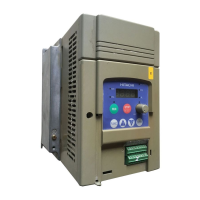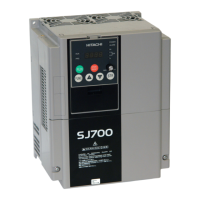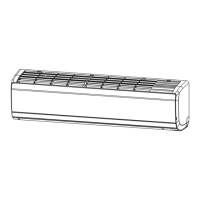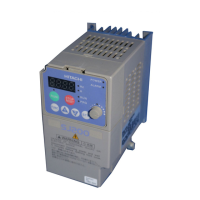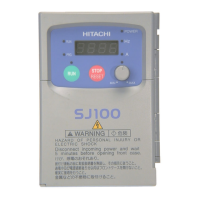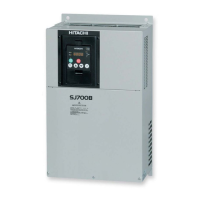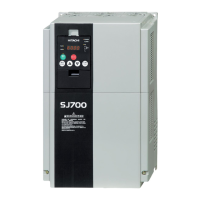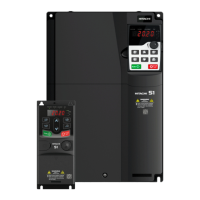Using Intelligent Output Terminals
Operations
and Monitoring
4–48
Alarm Signal The inverter alarm signal is active when a fault has
occurred and it is in the Trip Mode (refer to the
diagram at right). When the fault is cleared the
alarm signal becomes inactive.
We must make a distinction between the alarm
signal AL and the alarm relay contacts [AL0],
[AL1] and [AL2]. The signal AL is a logic
function, which you can assign to the open collec-
tor output terminals [11] to [15], or the relay
outputs. The most common (and default) use of
the relay is for AL, thus the labeling of its termi-
nals. Use an open collector output (terminals [11] to [15]) for a low-current logic signal inter-
face or to energize a small relay (50 mA maximum). Use the relay output to interface to higher
voltage and current devices (10 mA minimum).
Opt.
Code
Symbol Function Name
Output
State
Description
05 AL Alarm signal ON when an alarm has occurred and has not
been cleared
OFF when no alarm has occurred since the last
clearing of alarm(s)
Valid for
outputs:
11, 12, 13, 14, 15,
AL0 – AL2
Required
settings:
C026, C036
Notes:
• When the alarm output is set to normally
closed, a time delay of less than 2 seconds
occurs until the contact is closed when the
power is turned ON.
• Terminals [11] – [15] are open collector
outputs, so the electrical specifications of
[AL] are different from the contact output
terminals [AL0], [AL1], [AL2].
• When the inverter power supply is turned
OFF, the alarm signal output is valid as long
as the external control circuit has power.
• This signal output has the delay time (300ms
nominal) from the fault alarm output.
• The relay contact specifications are in
“
Specifications of Control and Logic
Connections” on page 4–9. The contact
diagrams for different conditions are on the
next page.
Run Stop
Fault
Tr i p
Fault
Alarm signal
active
RUN
STOP
RESET
STOP
RESET
Example for terminals [11] to [15]:
(Requires output configuration—
see page 3–53
.)
Example for terminals [AL0], [AL1], [AL2]:
(Default output configuration shown—see
page 3–53
.)
See I/O specs
on page 4–9
.
Relay position
shown during
normal running
(no alarm)
Inverter output
terminal circuit
Inverter output
terminal circuit
CM2
1314
15
11
12
AL1
AL0 AL2
RY
+
–
AL
AL
Power
Supply
Load
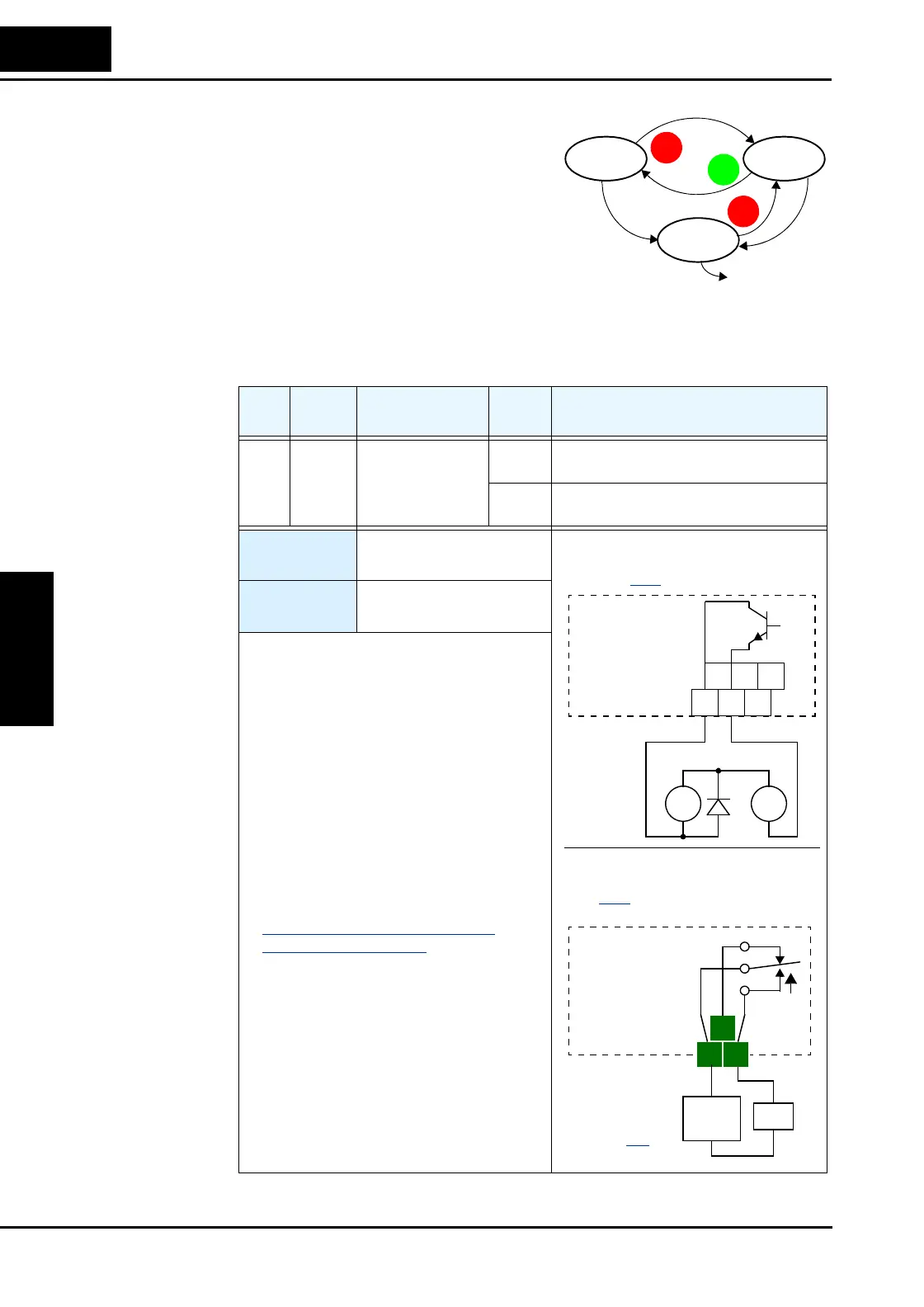